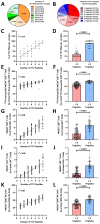Torque teno viruses exhaust and imprint the human immune system via the HLA-E/NKG2A axis
- PMID: 39295866
- PMCID: PMC11408220
- DOI: 10.3389/fimmu.2024.1447980
Torque teno viruses exhaust and imprint the human immune system via the HLA-E/NKG2A axis
Abstract
The ubiquitous Torque teno virus (TTV) establishes a chronically persistent infection in the human host. TTV has not been associated with any apparent disease, but, as part of the human virome, it may confer a regulatory imprint on the human immune system with as yet unclear consequences. However, so far, only few studies have characterized the TTV-specific immune responses or the overall immunological imprints by TTV. Here, we reveal that TTV infection leads to a highly exhausted TTV-specific CD8+ T-cell response, hallmarked by decreased IFN-γ production and the expression of the inhibitory NKG2A-receptor. On a functional level, we identified a panel of highly polymorphic TTV-encoded peptides that lead to an expansion of regulatory NKG2A+ natural killer, NKG2A+CD4+, and NKG2A+CD8+ T cells via the stabilization of the non-classical HLA-E molecule. Our results thus demonstrate that TTV leads to a distinct imprint on the human immune system that may further regulate overall human immune responses in infectious, autoimmune, and malignant diseases.
Keywords: HLA-E; NKG2A; TTV; Torque teno virus; immune evasion; immune regulation.
Copyright © 2024 Vietzen, Simonitsch, Friedel, Berger, Kühner, Furlano, Florian, Görzer, Koblischke, Aberle and Puchhammer-Stöckl.
Conflict of interest statement
The authors declare that the research was conducted in the absence of any commercial or financial relationships that could be construed as a potential conflict of interest.
Figures




References
MeSH terms
Substances
LinkOut - more resources
Full Text Sources
Research Materials

